Hampton, VA Pollen and Allergy Report for Summer 2023
Pollen Allergy Trends in Hampton, VA
When is pollen lowest in Hampton, VA?

February
Lowest month total PPM
Avg. PPM
When is pollen highest in Hampton, VA?

April
Highest month total PPM
Avg. PPM
How does pollen in Hampton, VA compare to Virginia?
Hampton has a higher average PPM than the state of Virginia.
Hampton yearly avg PPM:
Virginia yearly avg PPM:
How does pollen in Hampton, VA compare to the USA?
Hampton has a higher average PPM than the USA.
Hampton yearly avg PPM:
USA yearly avg PPM:
Is pollen worse this year in Hampton, VA?
Spring 2023 was worse than spring 2022.
Spring 2023 PPM:
Spring 2022 PPM:
Average PPM in Hampton, VA
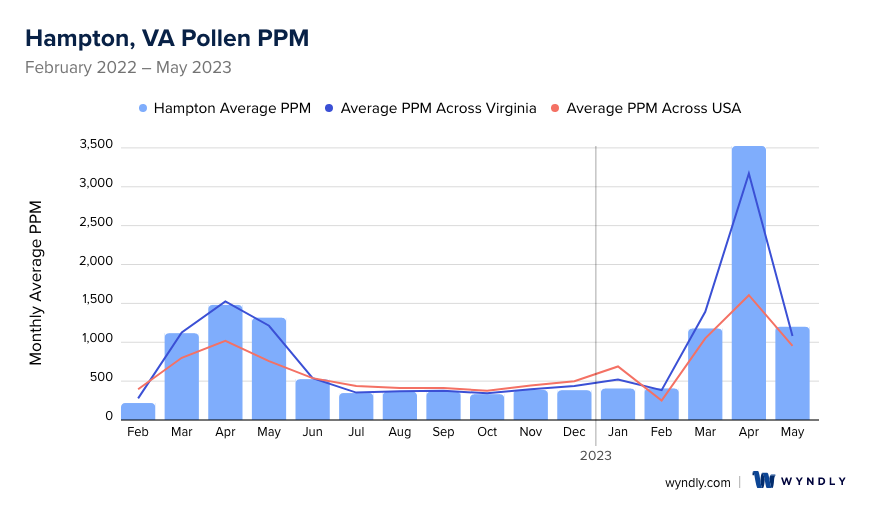
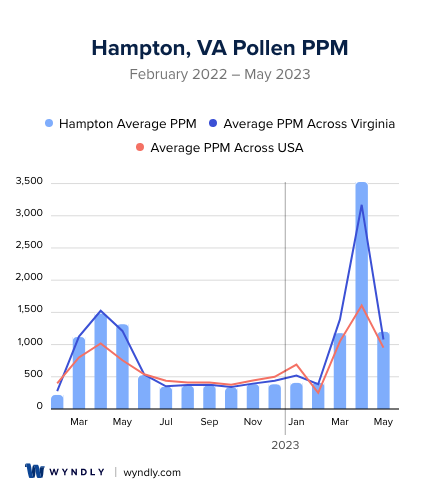
Hampton, VA Pollen and Allergy Breakdown by Month
Grass
When is grass pollen highest in Hampton, VA?
April has the highest grass pollen in Hampton, VA with an average PPM of
When is grass pollen lowest in Hampton, VA?
December has the lowest grass pollen in Hampton, VA with an average PPM of
Tree
When is tree pollen highest in Hampton, VA?
April has the highest tree pollen in Hampton, VA with an average PPM of
When is tree pollen lowest in Hampton, VA?
October has the lowest tree pollen in Hampton, VA with an average PPM of
Weed
When is weed pollen highest in Hampton, VA?
April has the highest weed pollen in Hampton, VA with an average PPM of
When is weed pollen lowest in Hampton, VA?
February has the lowest weed pollen in Hampton, VA with an average PPM of
Hampton, VA Pollen Monthly Breakdown by Pollen Type
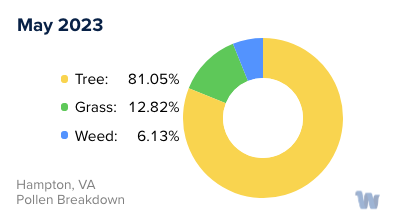
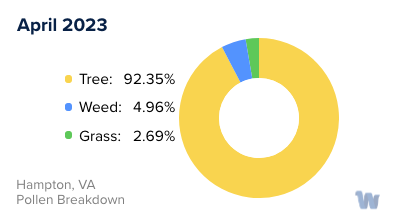
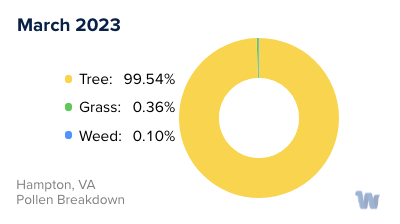
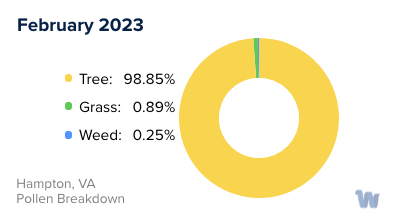
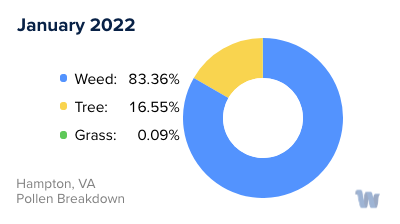
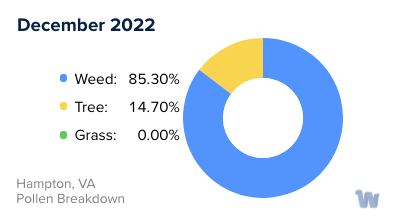
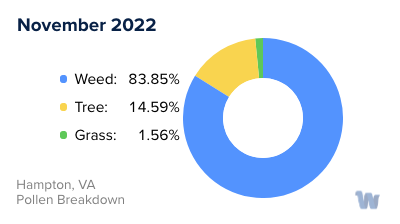
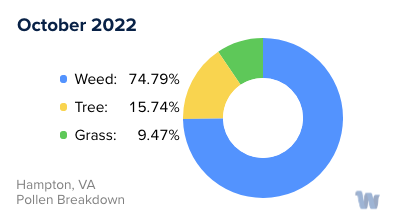
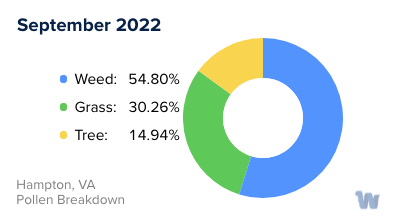
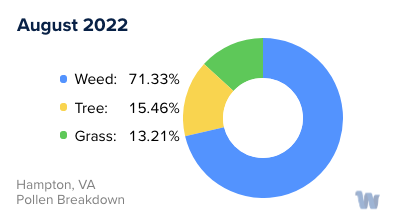
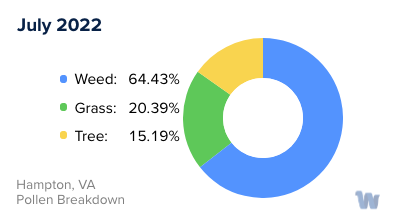
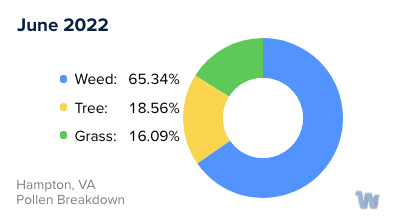
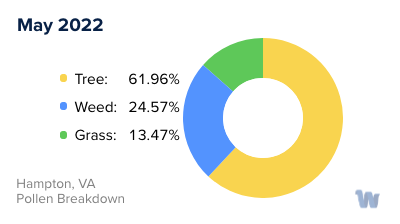
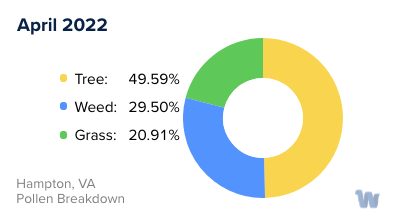
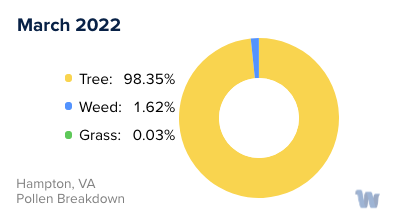
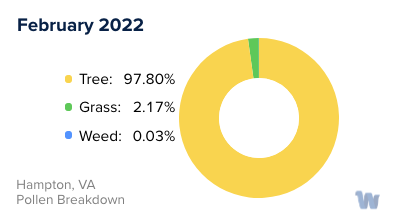
Pollen and Hay Fever in Hampton, VA
In the picturesque city of Hampton, Virginia, known for its diverse plant life, residents and visitors may encounter a significant challenge: pollen allergies. Defined by the periods when plants release pollen, these allergies are not a year-round issue but are prevalent during specific seasons, impacting the daily lives of many individuals.
The primary pollen producers in this region are grasses, trees, and weeds, each having its distinct season. The onset of spring, often in February, marks the beginning of allergy season, with tree pollen taking center stage. Species such as oak, river birch, and maple trees are among the common culprits that cause sniffles and sneezes across the city.
As we move into the warmer months of April, May, and June, grass pollen emerges as a primary concern. During these months, allergens from Bermuda grass, redtop grass, Johnson grass, Kentucky bluegrass, and orchard grass are in full swing. Those with grass pollen allergies may find these months particularly challenging, as pollen counts tend to peak during this period. Therefore, it's advisable to keep track of pollen counts and, if possible, limit outdoor activities to the evening when pollen levels are generally lower.
The arrival of late summer and fall signifies the weed pollen season. Weeds, including ragweed, thistle, and goldenrod, start releasing their pollen, leading to an increase in allergy symptoms among susceptible individuals. This season lasts until the end of November, marking the end of the allergy season as Virginia's winter sets in.
While Hampton, Virginia, is a beautiful place to live and visit, it's important to understand the various pollen seasons and the types of pollen prevalent during these times. This knowledge can help those affected by pollen allergies to better anticipate and manage their symptoms, leading to a more comfortable and enjoyable experience in this charming city.


